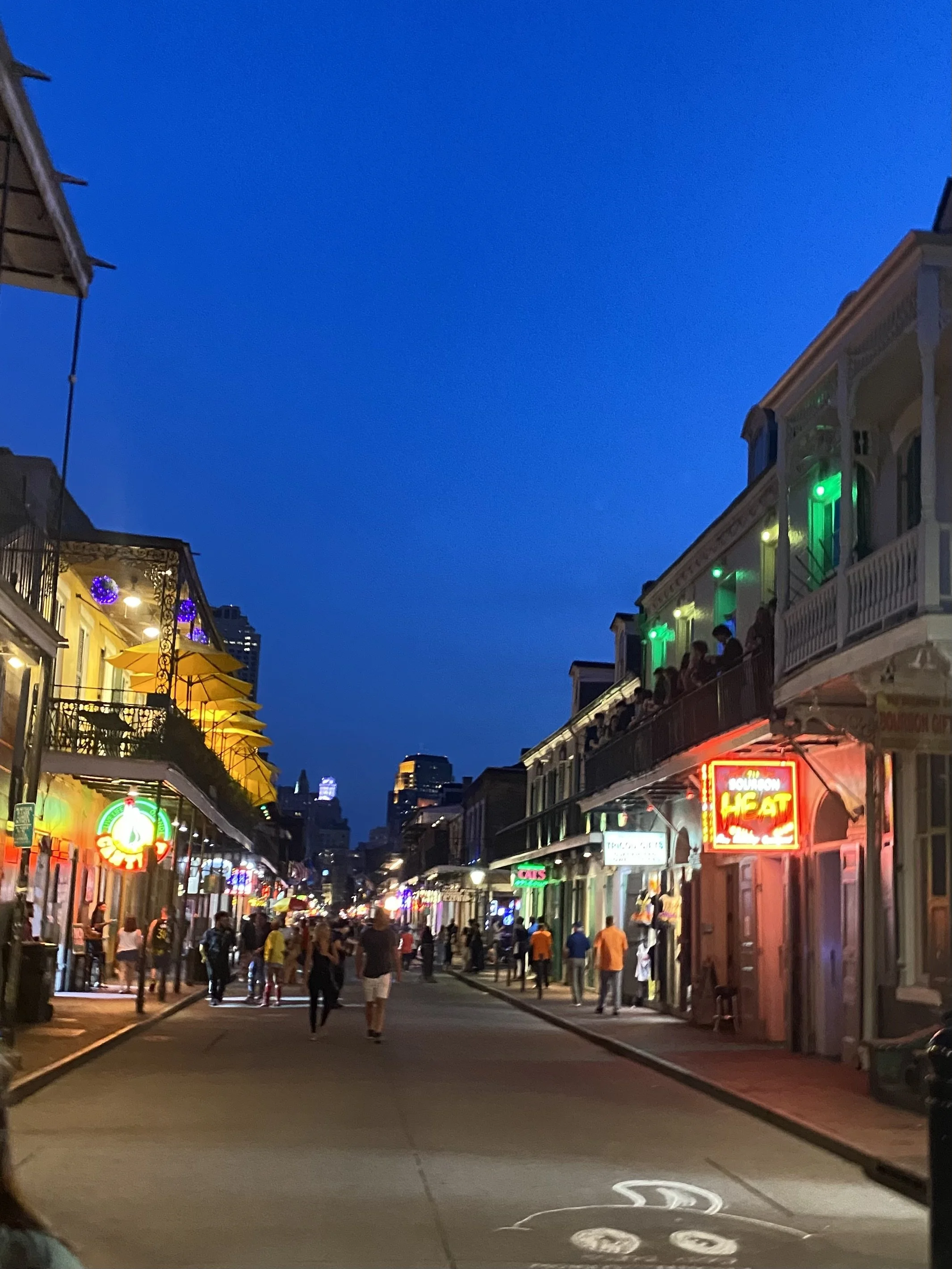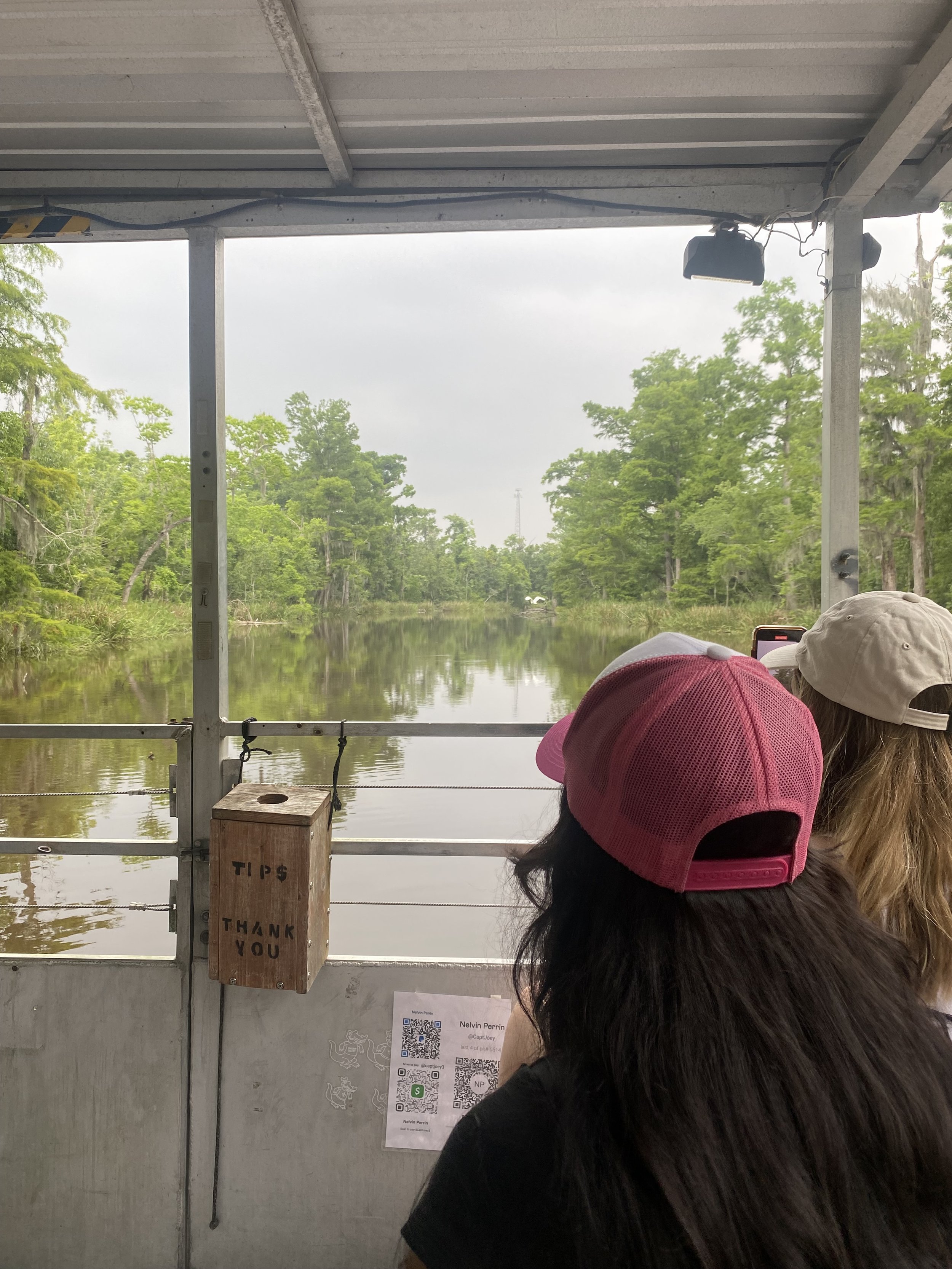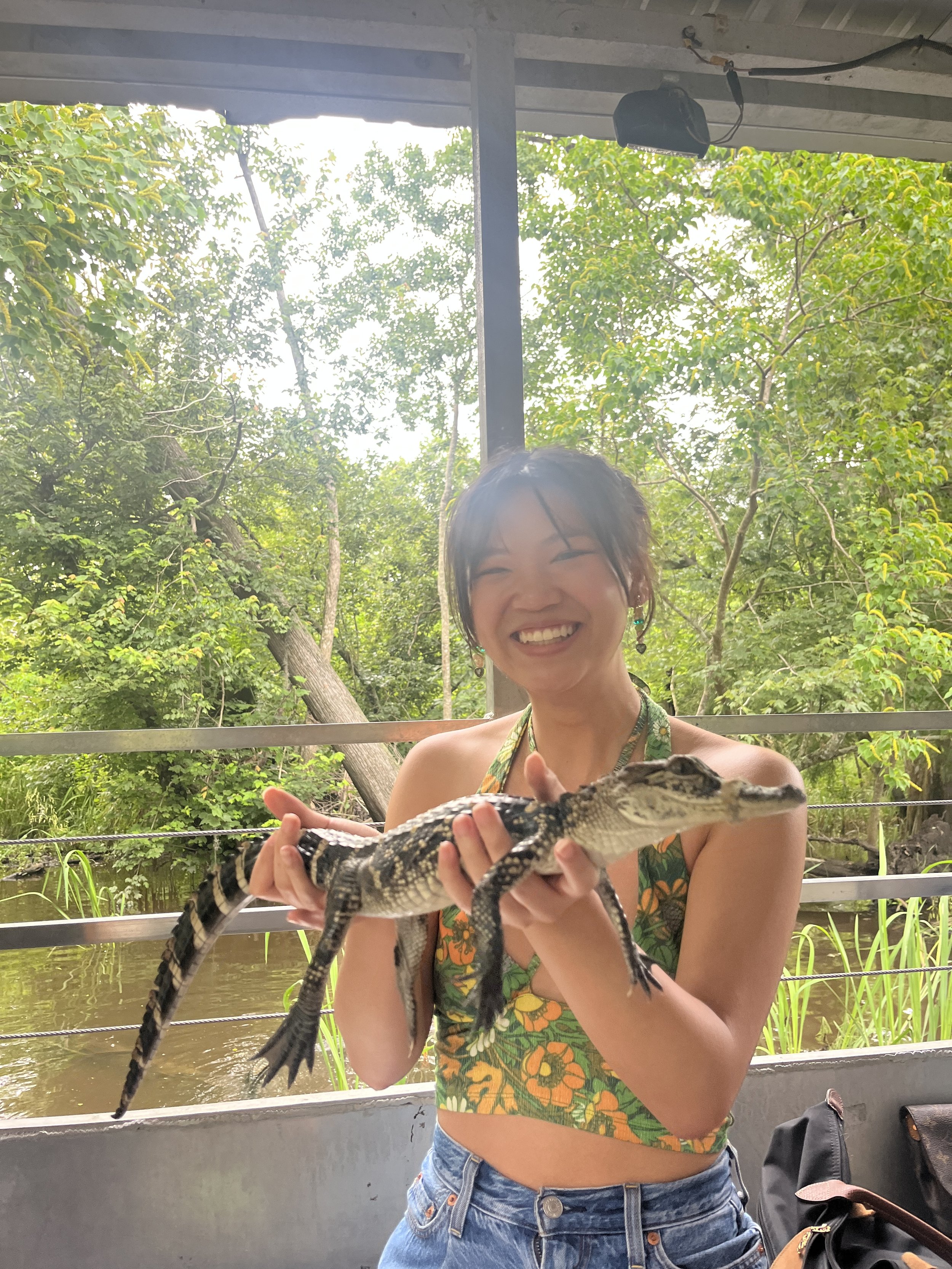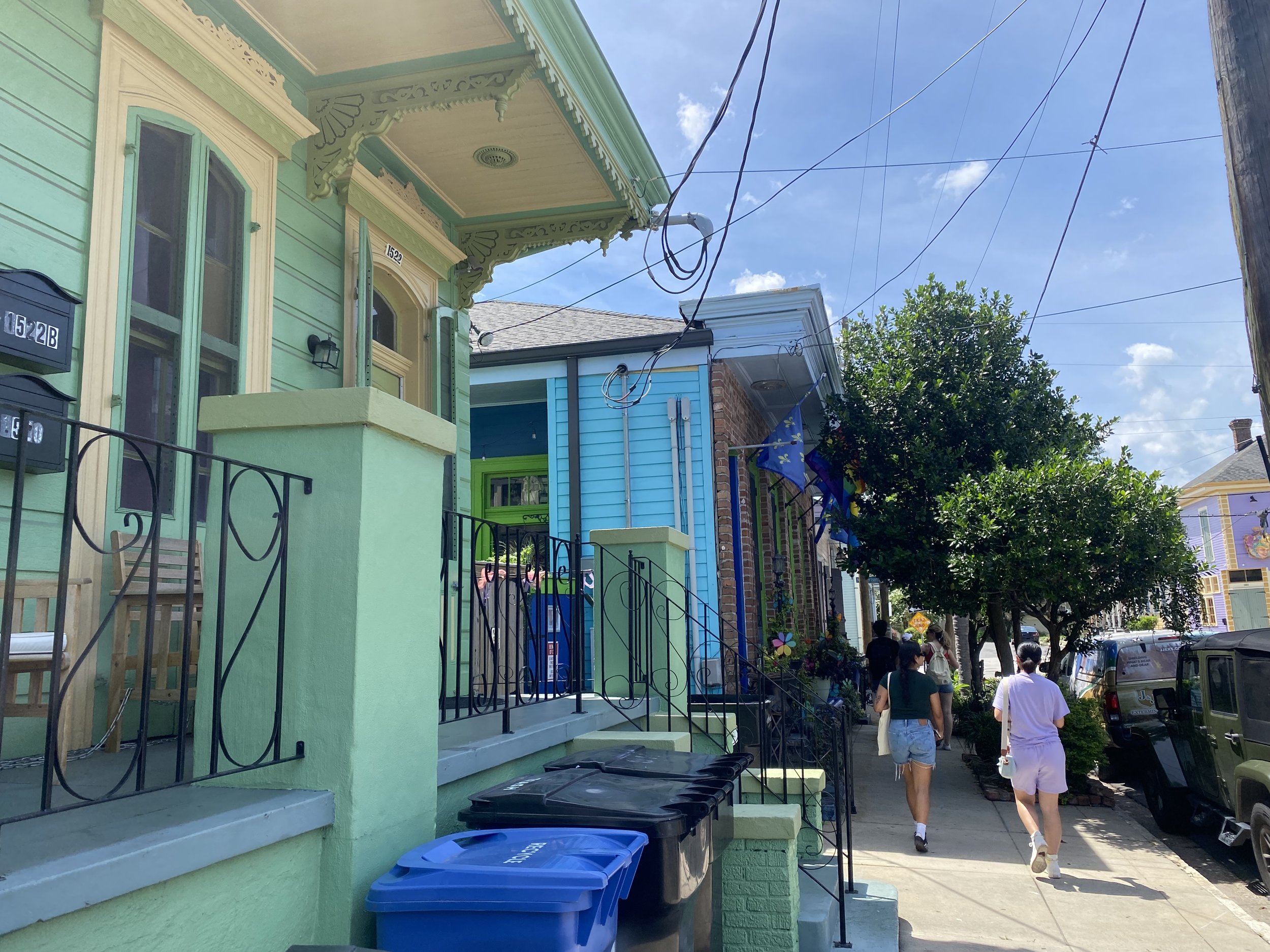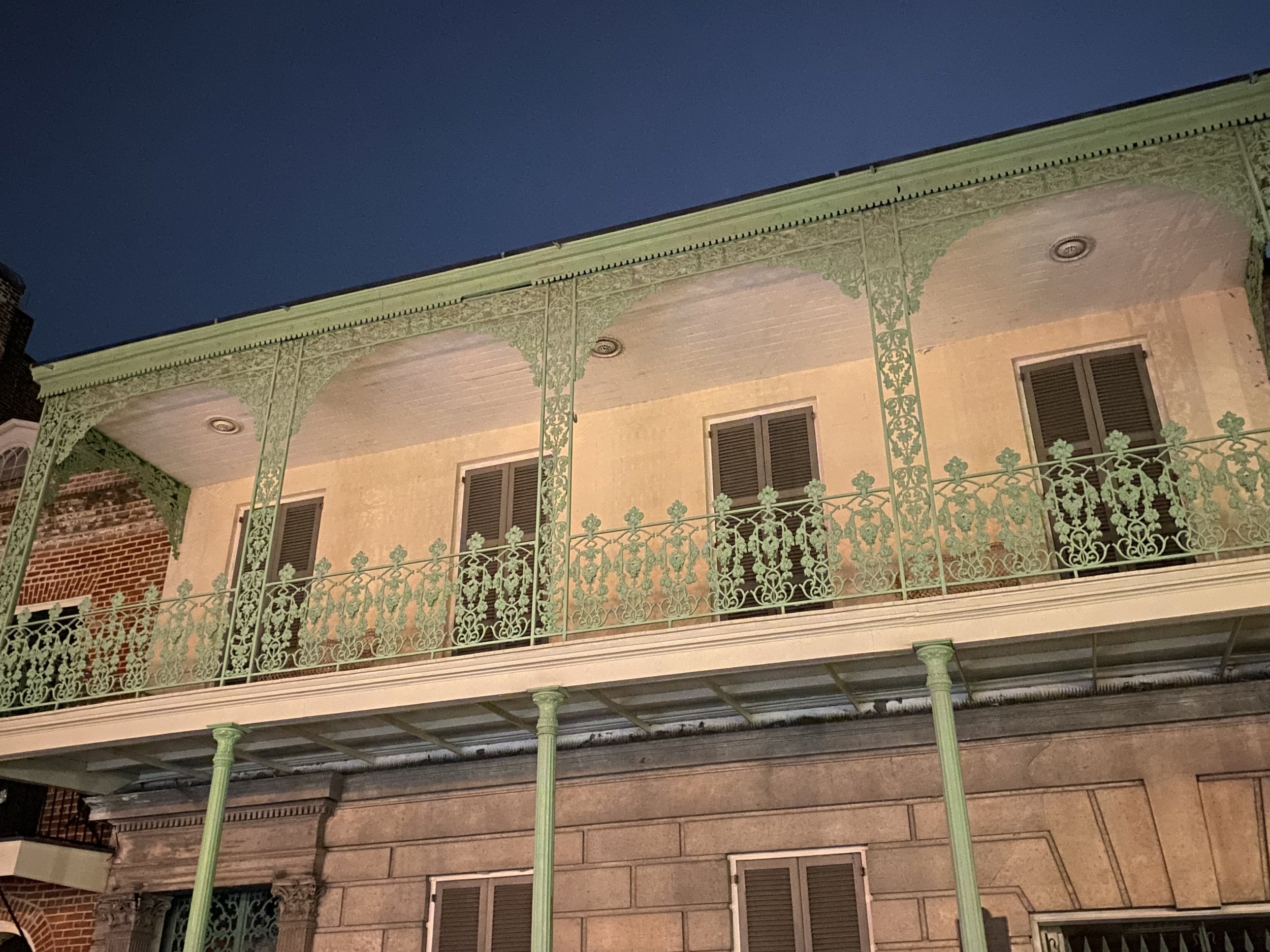Our venture out of Grand Isle and into New Orleans begins in a swamp.
Cypress trees and wild sprigs of grass rise from muddy water. The world is so green that I start to forget what other colors look like. As we embark down the bayou on our boat, the sun beats down mercilessly on my shoulders, my skin is sticky with sweat and bug spray, gnats bat across my face—and all of it is just wonderful.
““And there were the sounds of the swamp, a chorus of creatures, the cry of the birds.””
In Interview With The Vampire, swamps are an integral part of the locale of New Orleans. They’re a place of mystique and natural beauty; Louis describes them with a sense of awe and reverence, fondly recalling the swamp that lay just beyond his old house. But throughout the story the swamp is also a setting for horror and fear: it’s the place where Louis and Lestat bury the bodies of their victims, as well as the place that Louis and Claudia bury Lestat after they attempt to murder him.
It’s easy to see why Anne Rice felt inspired in a place like this, a place crawling with both life and decay. Our swamp tour is a fitting introduction to what I will discover of New Orleans over the next few days: magnificent in its rich history and geography, withered slightly by its transformation into a tacky tourist trap. Alligators roam the water, tremendous and terrifying beasts with leering, hungry eyes, but they’re fed hot pink marshmallow Peeps. A Croc bobs up and down on a bed of algae, a reminder that this site is overrun by tourists.
At one point, everyone on the boat passes around a baby alligator with a muzzle fastened around its deadly mouth. It’s an incredible experience, getting to hold a creature like this in your hands, to feel the softness and aliveness of its body, the little chest rising and falling with breath. But there’s also some artifice to this, seeing the gator’s mouth glued shut by the muzzle, its limbs rigid and frozen like it’s playing dead. It’s a trade-off: we’re sacrificing integrity for glamor.
““This was New Orleans, a magical and magnificent place to live. In which a vampire, richly dressed and gracefully walking through the pools of light of one gas lamp after another might attract no more notice in the evening than hundreds of other exotic creatures…””
New Orleans, as I come to learn, is built on this dichotomy, this ever changing push-and-pull of crudeness and elegance. Louis describes the city as a “medley of languages and colors”, and walking down the streets it’s impossible not to admire this medley. I think of this when we walk through the Tremé, where every single house is painted a different color and has its own personality.
Where I live, a little suburb in Tustin, California, our neighborhood has regulations to enforce perfect uniformity—I remember a resident being flagged by the HOA for painting their door too dark of a brown. It’s a shame, because there is so much beauty and wonder in the Tremé, where each house stands on its own, expressive and vibrant and unique. Maybe I’ll write to the Tustin HOA once I get back.
Houses in the Treme
““Even when the gas lamps went out and the planes came in and the office buildings crowded the blocks of Canal Street, something irreducible of beauty and romance remained [...] walking now in the starlit streets of the Quarter or the Garden District I am in those times again.””
There’s no place better to observe the vast, marvelous culture of New Orleans than in the French Quarter. All of the architecture is remarkable; I could spend hours in the Quarter just gazing at all of the buildings, soaking in their incredible details, the lattice of the galleries, no texture or pattern or pillar quite the same.
“The moon that rose over New Orleans then still rises,” Louis reflects of the city’s changes throughout his immortal life. This city itself has a certain immortality, too, being a unique time capsule of a place. It’s impossible to walk through the streets without thinking of all the humans who, long before we even came to exist, passed through these same spots, stayed in the same apartments, rested under the same shade.
You can’t walk the streets of New Orleans without hearing music—and even the music varies vastly in both genre and quality. As you pass one corner of Jackson Square, you’re serenaded by a jazz band, and walking up just a little further you’ll find a man blasting AC/DC’s “Thunderstruck” on an amp outside of the St. Louis Cathedral (I struggle to think of a worse form of blasphemy). But this is the city boiled down to its truest form: a mix of elegance and tackiness, thriving on pleasure and pain. A medley of languages and colors, for better or worse.
““There was no city in America like New Orleans.””
Lestat’s house!
A recurring thought comes to me as I dreamily drift through my first week in New Orleans: Where else could I find this? Where else could I find such a rich and complex tapestry of culture? Where else could I read a book about vampires and find that the world around me is not so different from the world on the page, dusky and sensuous and bewitching? Where else in the world could I do a swamp tour, a ghost tour, and a voodoo tour all in the span of one week?
I'll close with a scene from our voodoo tour: Madame Cinnamon Black gives us a showy theatrical spiel about the magic of this city, hands us strips of “wishing paper” that are very clearly hand-ripped from plain Inkjet printer paper. To make our wishes come true, we are instructed to wrap our wishing paper around offerings of money, drop them into a plastic tree stump and knock on the plastered wood nine times. I watch other tourists fish rumpled single bills from their wallets and hastily fold them into their wishing paper.
A one-dollar paper wish might seem cheap and flashy and worthless anywhere else—but everyone performs this ritual with such eagerness and reverence, some closing their eyes when they knock on the fake tree, one-two-three, one-two-three, one-two-three, praying between each beat of their knuckles. There’s a beautiful kind of desperation here. In spite of their wishes being paper, in spite of the drunkards in the street, in spite of the hokey gift shops, in spite of, in spite of—everybody wants to believe that the magic of New Orleans is real. I think I believe in it too.
